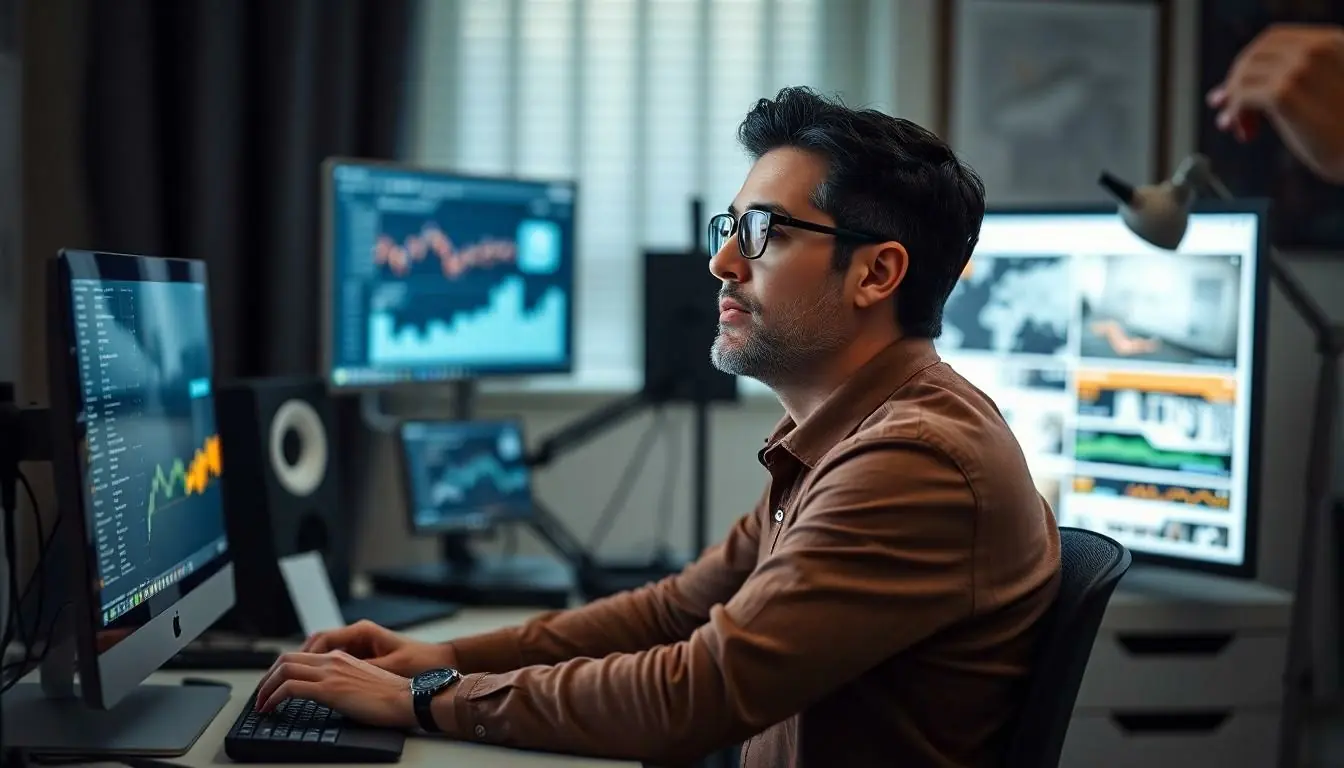In a world where AI can whip up essays faster than a caffeine-fueled college student, it’s tough to tell who’s behind the keyboard. Did your friend just drop a profound quote, or did ChatGPT craft that masterpiece while you were busy scrolling through cat memes? With the rise of AI-generated content, knowing the source has never been more crucial.
Table of Contents
ToggleUnderstanding ChatGPT and Its Writing Capabilities
ChatGPT represents a significant advancement in artificial intelligence-driven text generation. This model can produce coherent, contextually relevant content across various topics.
What Is ChatGPT?
ChatGPT is an AI language model developed by OpenAI. It utilizes deep learning techniques to understand and generate human-like text. Users interact with ChatGPT through prompts, prompting responses that cover a wide range of subjects like technology, history, and more. Its design enables versatility, while its extensive training data ensures that it reflects diverse viewpoints and information.
How Does ChatGPT Generate Text?
ChatGPT generates text through a process called transformer architecture. This framework helps the model analyze input data, noting patterns in grammar and context. Within the system, tokenization breaks down input into smaller units, allowing for effective understanding and generation of language. During response formulation, probabilities are calculated to determine the most fitting words based on context. The model prioritizes coherence and relevance while adapting to user prompts, leading to responses that can mimic human writing closely.
Methods to Check If ChatGPT Wrote Something

Detecting AI-generated content, such as that produced by ChatGPT, involves specific techniques. The following methods can aid in identifying the source of written material.
Text Analysis Techniques
Analyzing text structure often reveals AI-generated patterns. Look for uniformity in sentence length and vocabulary usage. Repetitive phrases or a lack of personal anecdotes can indicate AI authorship. Furthermore, examining coherence and context can provide insights into the text’s origin. AI-generated content sometimes lacks depth, displaying a surface-level understanding. Tracking distinct stylistic markers helps differentiate human writing from that created by AI. Observing these characteristics can lead to a clearer identification.
Plagiarism Detection Tools
Utilizing plagiarism detection tools proves effective for determining authorship. Such tools compare submitted texts against extensive databases of existing content. Inconsistencies or high similarity scores may suggest AI generation. Popular tools like Turnitin and Copyscape allow users to check for duplicated content, identifying potential AI influence. These platforms often highlight instances of similarity, assisting users in recognizing unique writing styles. Implementing these tools enhances the ability to discern if a text stems from ChatGPT or another source.
Evaluating the Credibility of Writing Sources
In today’s digital landscape, verifying the credibility of writing sources is crucial. This process ensures reliability and accuracy in information consumption.
Importance of Source Verification
Source verification plays a key role in distinguishing trustworthy information from unreliable content. Authenticity impacts readers’ understanding significantly, especially when AI-generated text is involved. When evaluating information, identifying the original source fosters transparency. Utilizing techniques like cross-referencing with recognized publications helps establish credibility. Readers should not overlook the importance of examining authors’ backgrounds and their expertise in the subject matter. Maintaining skepticism regarding questionable claims further strengthens source evaluation.
Comparing Human and AI Writing Styles
Human writing often exhibits unique characteristics, while AI writing tends to follow specific patterns. Varied sentence structures, personal anecdotes, and emotional depth frequently appear in human-generated text. AI writing, in contrast, may demonstrate uniformity in sentence length and repetitive phrases. The presence of creativity and nuanced expression marks human compositions distinctly. In addition, discerning the absence of personal experiences in AI-generated content aids recognition. Readers should remain vigilant when analyzing text, as identifying these differences can clarify authorship.
Limitations of Detection Methods
Detecting AI-generated content presents unique challenges. Identifying patterns can often lead to confusion. Variability in text production complicates the process. For example, human authors frequently embed personal experiences, while AI-generated text lacks these unique elements. Recognizing these distinctions is crucial for establishing authorship. Additionally, the evolving nature of AI models increases the difficulty of detection. Techniques that worked on earlier models may not apply accurately to newer iterations like ChatGPT.
Challenges in Identifying AI-Generated Text
Identifying AI-generated text involves numerous challenges. Contextual understanding often falls short when solely relying on algorithms. AI can produce diverse outputs, making classification difficult. Patterns like uniform sentence length or repetitive phrasing may not always be evident. Readers may interpret these characteristics differently. Moreover, AI’s ability to mimic various writing styles further blurs the lines. Instances of ambiguous authorship prompt careful analysis. Reliance on straightforward patterns can mislead evaluators into false conclusions.
Addressing False Positives and Negatives
False positives can create significant issues in authorship attribution. AI detection tools might incorrectly label human-authored content as generated by machines. This mislabeling arises from a narrow focus on specific traits. On the other hand, false negatives occur when AI-generated text escapes detection. Subtle differences in structure may not stand out, leading to oversight. Balancing accuracy and precision is necessary in developing tools. A combination of advanced techniques and human insight will enhance the reliability of detection methods. Continuous updates and refinements will mitigate these inaccuracies over time.
As the line between human and AI-generated content blurs it’s essential to adopt effective strategies for discerning authorship. By utilizing text analysis techniques and plagiarism detection tools individuals can enhance their ability to identify AI contributions. This is particularly important in a landscape where credibility is paramount.
Understanding the nuances of writing styles can also provide valuable insights into the origins of a text. While detection methods continue to evolve the combination of technology and human judgment remains crucial. Staying informed and vigilant will empower readers to navigate the complexities of content authenticity with confidence.





